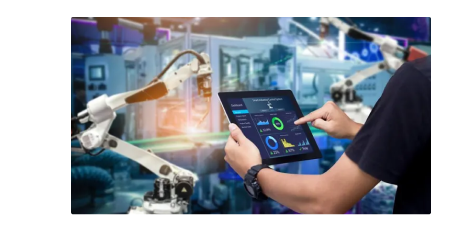#TakeCharge with #Aimshala
How make a career in Art and Technology Developer
A career as an Art and Technology Developer merges creativity with technology, allowing individuals to create innovative art experiences using digital tools. To embark on this career path, individuals typically need a strong academic background in fine arts, design, computer science, or a related field. Pursuing a bachelor’s degree is essential, followed by potential specialization through master’s programs or certifications in digital media or interactive design. Gaining practical experience through internships, collaborative projects, or working in creative technology settings enhances employability. Networking with professionals in the field and staying updated with the latest trends in art and technology are also crucial. With a blend of education, experience, and passion for both art and technology, one can build a rewarding career dedicated to advancing artistic expression through digital mediums.
Career in Art and Technology Developer
What are the roles and responsibilities in Art and Technology Developer?
- Creating Digital Art : Art and Technology Developers design and produce digital artworks, utilizing software and technology to enhance artistic expression.
- Developing Interactive Experiences : They create interactive installations and experiences that engage audiences through technology, often incorporating elements like augmented reality or virtual reality.
- Collaborating with Artists : Art and Technology Developers work alongside traditional artists to integrate technology into their practices, enhancing the artistic process.
- Researching New Technologies : They stay updated with emerging technologies and tools to incorporate into their work, ensuring their projects are innovative and relevant.
- Teaching and Workshops : Many Art and Technology Developers engage in educational outreach, teaching workshops on digital art techniques and technology use.
What education is required to study Art and Technology Developer
Check out the dates of the total number of candidates who have appeared in the CUET 2022 exam from the below table.
Stream |
Graduation |
After Graduation |
After Post Graduation |
|
|
Path 1 |
Completion of high school with a focus on art, design, and technology courses. |
Bachelor of Fine Arts in Digital Arts or a related field. |
Master's degree in Interactive Media or specialized fields such as Game Design or Digital Media Arts. |
Certifications in specialized software or technologies relevant to digital art. |
|
Path 2 |
Completion of high school with emphasis on design or technology courses. |
Bachelor's degree in Graphic Design or Computer Science. |
Master's degree in Digital Media or related fields. |
Workshops or certifications in emerging technologies like AR/VR or coding. |

Feeling unsure about
your future?
Let's find the perfect career path for you!
with AI-powered career
guidance

What are the key skills required for Art and Technology Developer
- Creativity - Creativity is essential for generating unique ideas and concepts in digital art and technology.
- Technical Proficiency - Proficiency in software such as Adobe Creative Suite, Unity, and coding languages is crucial for executing projects.
- Problem-Solving Skills - The ability to troubleshoot issues in both artistic concepts and technical execution is vital for success.
- Communication Skills - Effective communication is important for collaborating with other artists and presenting ideas to stakeholders.
- Project Management Skills - Managing projects efficiently, including timelines and budgets, is key to successful outcomes in art and technology.
What are the career opportunities in Art and Technology Developer?
- Digital Artist - Digital Artists create artworks using digital tools, often for various media such as video games, films, and advertising.
- Interactive Designer - Interactive Designers focus on creating engaging user experiences for websites, applications, and installations.
- Multimedia Developer - Multimedia Developers produce content that combines text, audio, images, and video for various platforms.
- Game Designer - Game Designers create the concepts and mechanics for video games, integrating art and technology.
- Art Technologist - Art Technologists work at the intersection of art and technology, developing tools and methodologies for digital art.
What is the salary and demand for Art and Technology Developer?
- Salary Overview - The typical salary for Art and Technology Developers ranges from $50,000 for entry-level positions to over $100,000 for experienced professionals, with variations based on education and location.
- Regional Salary Variations - Salaries can vary significantly by region; for example, Art and Technology Developers in urban areas with a high demand for digital art may earn more than those in rural settings.
- Current Job Market Demand - The demand for Art and Technology Developers is growing due to the increasing integration of technology in art and the entertainment industry.
- Future Demand Projections - Future demand for Art and Technology Developers is expected to rise as technology continues to evolve and the need for innovative digital experiences expands.
Leading companies for careers in Art and Technology Developer

Adobe Systems

Autodesk

Epic Games

Unity Technologies

Pixar Animation Studios

Weta Digital

Riot Games

Blizzard Entertainment
What are the best colleges for Art and Technology Developer in India?
Undergraduate
College |
Location |
Website |
|
National Institute of Design |
Ahmedabad |
https://www.nid.edu |
|
Shri Ram College of Commerce |
Delhi |
https://www.srcc.edu |
|
Symbiosis Institute of Design |
Pune |
https://www.sid.edu.in |
|
Srishti Institute of Art, Design and Technology |
Bengaluru |
https://www.srishti.ac.in |
|
L. S. Raheja School of Art |
Mumbai |
https://www.lsrahejaschoolofart.com |
Postgraduate
College |
Location |
Website |
|
National Institute of Design |
Ahmedabad |
https://www.nid.edu |
|
Indian Institute of Technology, Bombay |
Mumbai |
https://www.iitb.ac.in |
|
National Institute of Fashion Technology |
New Delhi |
https://www.nift.ac.in |
|
Srishti Institute of Art, Design and Technology |
Bengaluru |
https://www.srishti.ac.in |
|
Maharaja Sayajirao University of Baroda |
Vadodara |
https://www.msubaroda.ac.in |
What are the best colleges for Art and Technology Developer in Abroad?
College |
Location |
Website |
|
Rhode Island School of Design |
Providence, Rhode Island, USA |
https://www.risd.edu |
|
California Institute of the Arts |
Valencia, California, USA |
https://www.calarts.edu |
|
Royal College of Art |
London, United Kingdom |
https://www.rca.ac.uk |
|
School of Visual Arts |
New York City, New York, USA |
https://www.sva.edu |
|
University of the Arts London |
London, United Kingdom |
https://www.arts.ac.uk |
What are the top entrance exams in India for pursuing a career in Art and Technology Developer
College |
Tentative Date |
UG/PG |
Important Elements |
Website |
|
National Institute of Design |
January |
Undergraduate |
Design Aptitude Test, General Knowledge, and English. |
https://www.nid.edu |
|
Indian Institute of Technology, Bombay |
April |
Postgraduate |
GATE Exam, Design Concepts, and Analytical Skills. |
https://www.iitb.ac.in |
|
National Institute of Fashion Technology |
February |
Undergraduate |
Creative Ability Test, General Knowledge, and English. |
https://www.nift.ac.in |
|
Srishti Institute of Art, Design and Technology |
March |
Postgraduate |
Design Aptitude Test and Portfolio Review. |
https://www.srishti.ac.in |
|
Rhode Island School of Design |
January |
Postgraduate |
Portfolio Submission and Interview. |
https://www.risd.edu |
Pros & Cons of a Career in Art and Technology Developer
Pros
- Art and Technology Developers can create impactful and innovative works that combine art and technology.
- The field offers competitive salaries, especially for those with advanced degrees and specialized skills.
- Professionals in this field contribute to the evolution of art, exploring new mediums and expressions.
- The career provides opportunities for continuous learning and collaboration with diverse teams.
Cons
- The job can be demanding with long hours, especially when working on tight deadlines for projects.
- Some roles may require extensive collaboration, which can lead to creative differences.
- Funding uncertainties in art projects can lead to job instability or limited resources.
- The work can sometimes be isolating, especially for those engaged in independent projects.
Did you find this information helpful?


Report
0 out of 0 found this helpful


